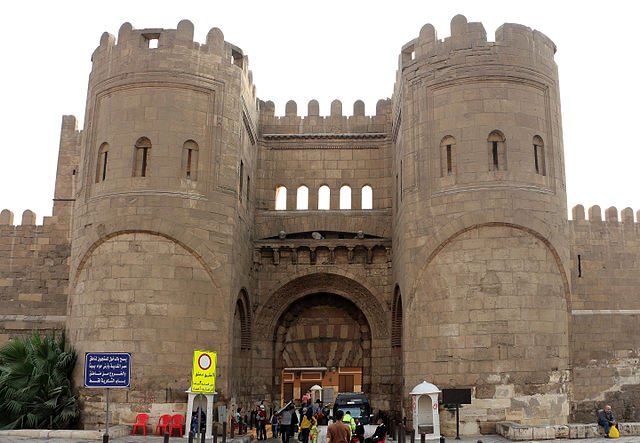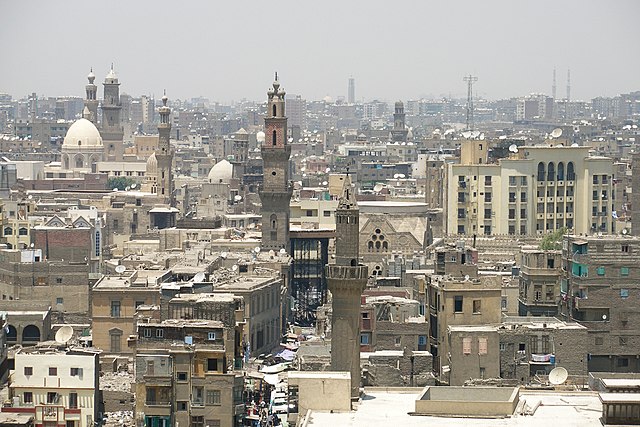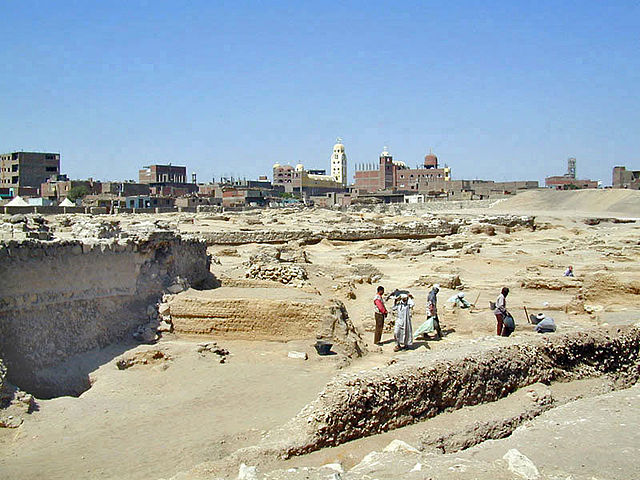Bab al-Futuh is one of three remaining gates in the city wall of the old city of Cairo, Egypt. It is located at the northern end of al-Mu'izz Street. The other two remaining gates are Bab al-Nasr in the north and Bab Zuwayla in the south. The gate was built during the Fatimid period, originally in the 10th century, then rebuilt in its current form in the late 11th century.
Bab al-Futuh
Stonework details of the gate
Details above the gate
Blind arch with "cushion" voussoirs on the inner side of the flanking towers
Islamic Cairo, or Medieval Cairo, officially Historic Cairo, refers mostly to the areas of Cairo, Egypt, that were built from the Muslim conquest in 641 CE until the city's modern expansion in the 19th century during Khedive Ismail's rule, namely: the central parts within the old walled city, the historic cemeteries, the area around the Citadel of Cairo, parts of Bulaq, and Old Cairo which dates back to Roman times and includes major Coptic Christian monuments.
Islamic Cairo
The excavated remains of Fustat in 2009
The Mosque of Ibn Tulun, built in the 9th century. It is a rare and outstanding example of preserved Abbasid architecture outside Iraq.
Bab al-Futuh, one of the northern gates of Cairo built by the Fatimid vizier Badr al-Jamali in the late 11th century







